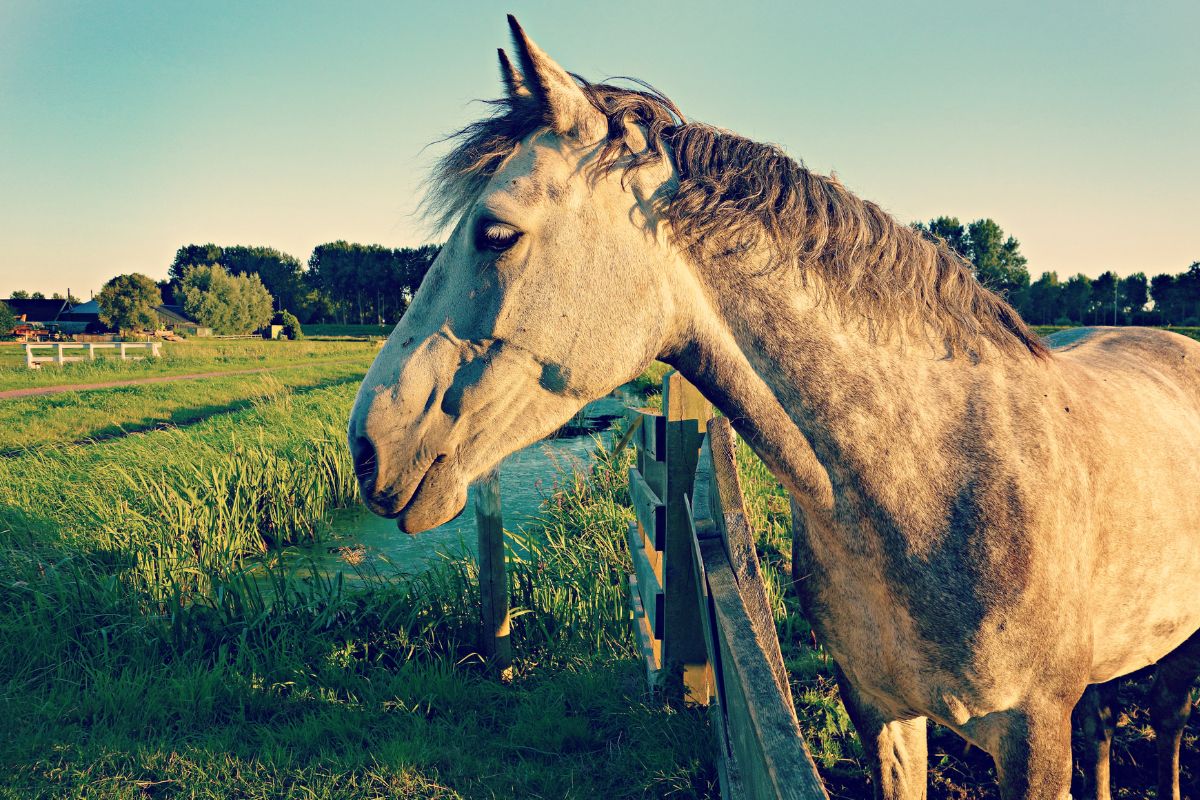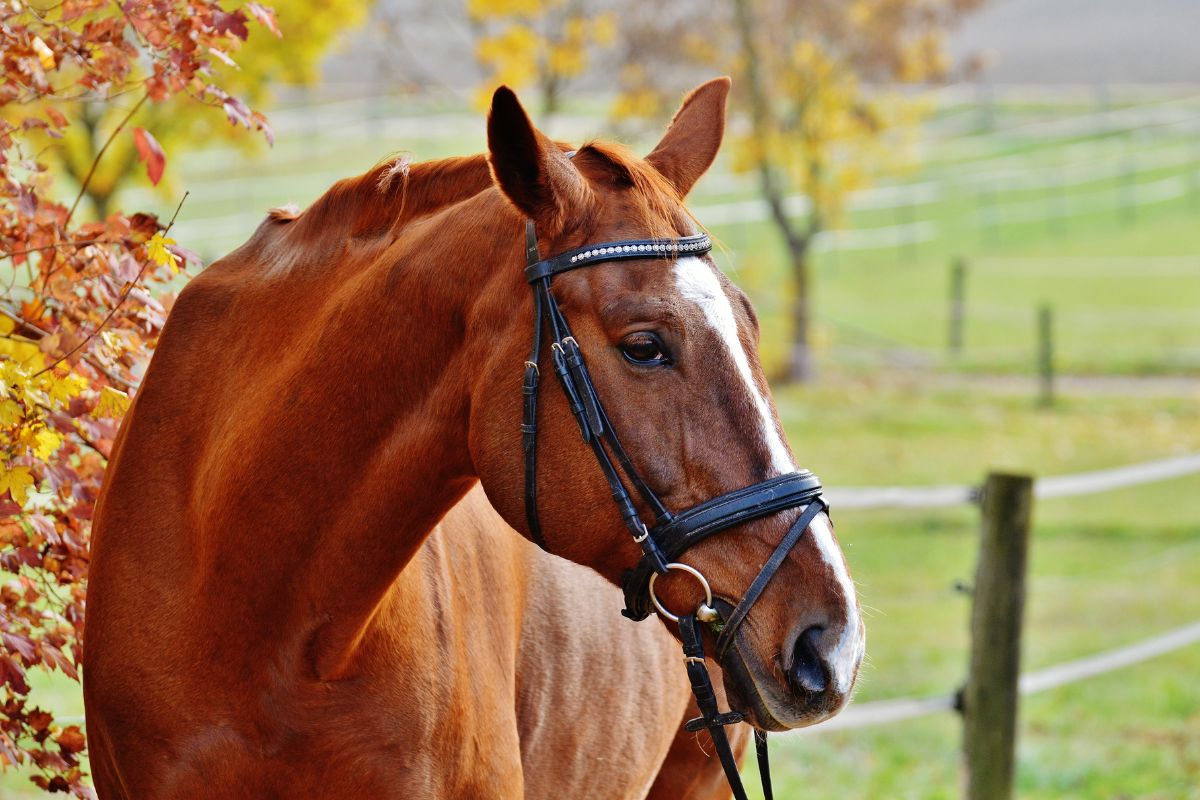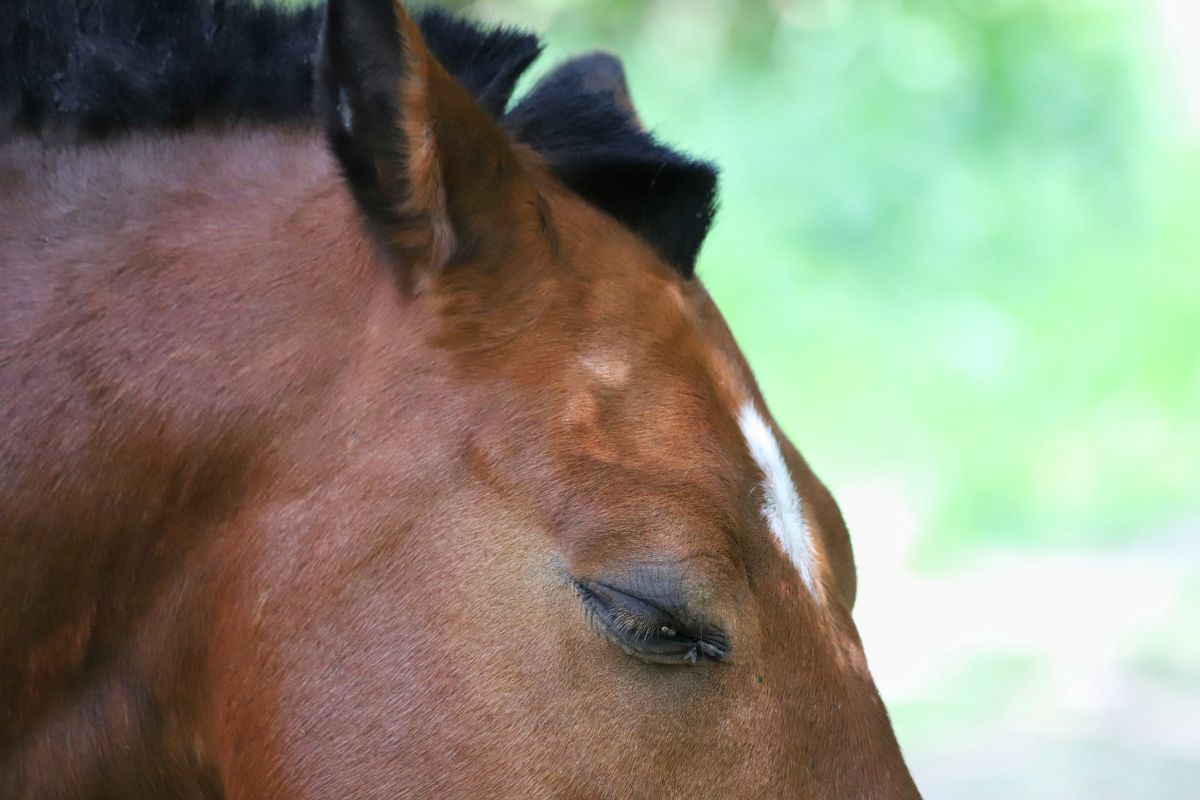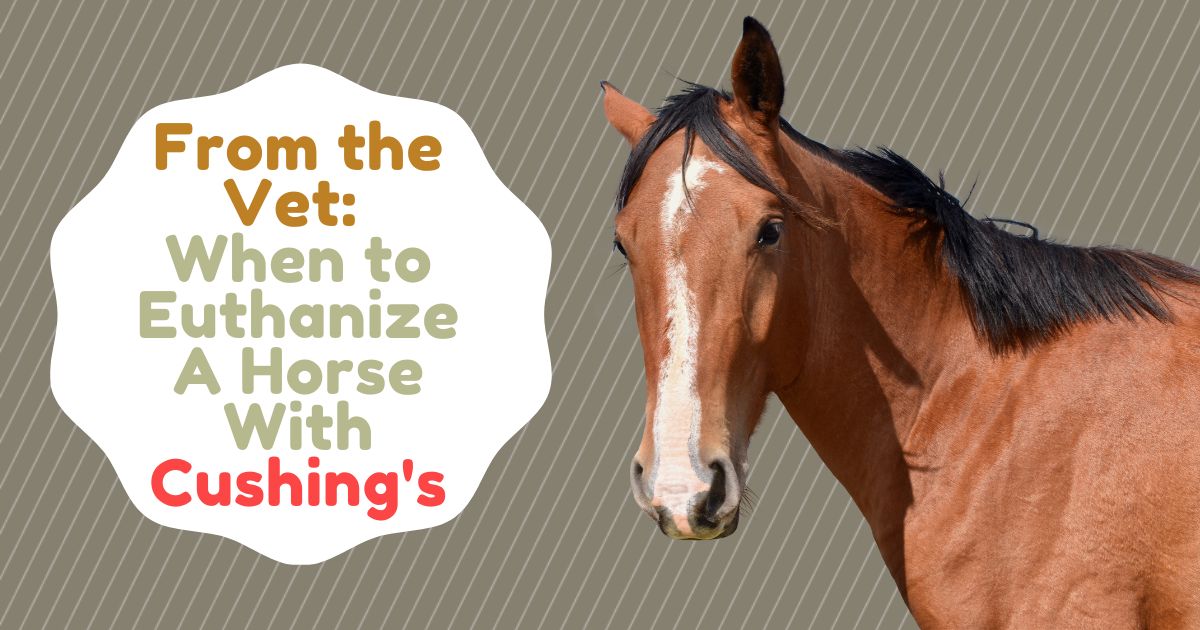Cushing’s Disease in Horses
Vets mainly diagnose Cushing’s in horses over the age of ten years. As your horse ages and its quality of life deteriorates, how do you decide when to euthanize a horse with Cushing’s?
The tumor affecting the pars intermedia of the pituitary gland overproduces pro-opiomelanocortin (POMC) and adrenocorticotropic hormone (ACTH). This overproduction results in the inappropriate production of cortisol which negatively affects your horse’s health in several ways.

The Effect of Cushing’s on Quality of Life
The hypothalamic–pituitary–adrenal (HPA) axis controls the production and regulation of cortisol. The HPA axis uses adrenocorticotropic hormone (ACTH) and hypothalamic corticotropin-releasing hormone (CRH) to form a negative feedback loop that maintains homeostasis.
The hypothalamus regulates several body functions, including appetite, thirst, thermoregulation, and blood pressure. The tumor causing the effects of Cushing’s disease negatively affects the cortisol homeostasis in the body.
The most common symptoms that develop include hirsutism (increased hair growth due to high levels of androgens in the bloodstream), increased thirst and urination, swelling of the soft tissue around the eyes, depressed activity levels, abnormal fat distribution, and chronic laminitis.
The effects of Cushing’s on a horse’s external appearance do not present significant issues for their quality of life. Chronic laminitis is a severe symptom that can rapidly deteriorate a horse’s health and welfare.
Laminitis causes extreme pain, and recurrent bouts can affect a horse’s overall attitude and make them depressed, moody, or reluctant to move. The condition occurs due to the laminae’s deterioration that bonds the hoof’s wall to the pedal bone.
If the symptoms of Cushing’s disease remain manageable, a horse can still have a good quality of life, but there is no cure. A time will come when owners need to consider if their horse is not coping with the recurrent symptoms and suffering.
Is Treating Equine Cushing’s Effective?
There is no cure for Cushing’s. Deciding to treat Cushing’s depends on the symptoms’ chronicity and severity.
It is also imperative to ensure that your vet obtains the correct diagnosis so that they can provide an accurate prognosis. A definitive diagnosis requires gold-standard laboratory tests such as the Dexamethasone Suppression Test, basal cortisol measurements, and overt clinical symptoms.
Once owners have a definitive diagnosis, the attending vet will discuss available treatment options. The average survival rate of horses diagnosed with Cushing’s is four and a half years with supportive care.
Medication with FDA approval includes pergolide mesylate (Prascend), trilostane, and cyproheptadine. Vets also recommend a low-sugar and low-carbohydrate diet.
If a horse responds well to treatment and its symptoms are manageable, it may maintain a good quality of life. Secondary complications of Cushing’s that may compromise treatment effectiveness include adverse effects of mineralocorticoids and growth hormones on bone and muscles, anemia, excessive appetite, weight gain, and behavior changes.

When to Euthanize a Horse With Cushing’s
Cushing’s disease does not offer a great prognosis, especially as vets only discover most cases at the end stages of the condition. The decision often rests on the cost of treatment, the projection of a good quality of life, and the horse’s function or value.
Veterinarians try to discuss a horse’s quality of life with an owner before addressing a possible case for euthanasia. Vets will recommend euthanasia if a horse suffers from severe and recurrent bouts of laminitis that are unmanageable or cause high levels of pain or discomfort.
If a horse is not sleeping well, exhibiting significant lethargy, is unresponsive to recall commands, and showing signs of depression, it may be time to consider euthanasia. It is a very emotional and time-consuming decision, so it is essential to consider your horse’s welfare above all else.
Discuss all your options with the attending vet until you can decide so you feel safe and calm.
Once you decide that euthanasia is the best course of action to alleviate your horse’s suffering, an end-of-life plan helps settle the euthanasia’s logistics.
The following factors need careful consideration before your horse’s euthanasia:
- Location: The best place to euthanize a horse is a calm and relaxed environment that is easily accessible for the disposal vehicle. A field or a quiet paddock near an access road is a good option.
- Do you want to be present?: Discuss with your vet if you would like to be present for the euthanasia, as it is sometimes difficult to watch a beloved pet undergo the procedure. Large animals have very dramatic reactions to sedatives or barbiturates, which can be unsettling.
- Disposal options: Ensure that your vet and your stable staff are familiar with the laws and regulations related to disposal options for large animals in your state. Contact the person responsible for the disposal well before the date for the euthanasia to be sure that the body is collected promptly.
FAQs on Cushing’s in Horses
Do Horses With Cushing’s Suffer?
The hormones overproduced by the pituitary gland have various effects on a horse’s overall health. Cushing’s disease results in a dopamine deficiency or lack of regulation in dopamine feedback. This deficiency adversely affects the adrenal glands and kidneys and predisposes patients to a higher risk of infection.
The most significant consequence of Cushing’s disease is the inevitable development of laminitis due to the deterioration of the laminae in the hooves. Laminitis is a painful condition that severely affects a horse’s quality of life. The treatment for laminitis is palliative, as there is no surgery or curative measure to correct the debilitation of the lamina.
When horses develop chronic bouts of laminitis, they suffer immensely. If their quality of life starts to deteriorate, their fundamental right to a life without pain becomes compromised.
Is Euthanasia Painful For Horses?
Euthanasia is a Greek term that means “good death.” Euthanasia is considered a means of mercifully ending an animal’s suffering and should be carried out by an experienced professional. Euthanasia should offer an animal a fear-free and painless alternative when they no longer have a good quality of life.
Most veterinarians strive to achieve painless and stress-free euthanasia but working with large animals who are often unpredictable makes it challenging to ensure a smooth process.
Sedating a horse before euthanasia does make the process less stressful, and the horse is more relaxed when handled. Heavy sedation decreases environmental stimulation and anxiety an owner feels, as horses are incredibly sentient and can sense emotional distress.
The two main options for euthanasia include lethal injection with an overdose of a barbiturate (a potent anesthetic drug) or a frontal shot with a firearm. The vet administers the lethal injection through an intravenous catheter. A frontal shot needs to be performed by a qualified veterinarian or certified marksman.
Both methods are painless, but the process of ending a life is traumatizing, so owners must carefully consider if they would like to be present. During euthanasia, the horse becomes unconscious very quickly and often falls dramatically, which can be pretty unsettling.
Once recumbent, the horse’s heart stops beating, and its brain is no longer functional. Agonal gasps are the last few breaths an owner may hear, the muscles sometimes twitch, or the horse’s limbs may move involuntarily. The horse is unaware of anything that happens after its heart stops beating. The attending veterinarian confirms cardiac arrest.
What Happens to Horses After They Are Euthanized?
Before a horse’s euthanasia, owners need to decide on a disposal option. It is best to settle all logistics and ascertain costs before euthanasia so that the process presents as few challenges as possible. The euthanasia site must be private, accessible for a vehicle to remove the body, and easy to clean.
Carcass disposal regulations differ from state to state, so discussing legal issues with vets or municipal authorities is vital before your horse’s euthanasia. Options for horse carcass disposal include communal cremation or individual cremation if owners would like the ashes back, home burial, landfill burial, rendering, bio-digestion or composting.
A unique way to remember a horse is to remove a lock of its mane and keep it in a photo frame as a memento if owners elect not to cremate their horse with a return of ashes.
If it is legal in your state to bury your horse on your property, check the burial pit site, size, and depth regulations. Proximity to groundwater is also essential to ensure water sources are not contaminated.
Most animals euthanized by lethal injection are not fit for animal or human consumption, so it is vital to ensure that those animals do not enter any food production chains. Some animals euthanized without lethal injection can be offered to facilities to be processed for animal consumption, such as zoos.
Why Can’t You Bury a Horse?
Some states have strict regulations and laws about the disposal of animal carcasses so burying your horse at home in some states is illegal. The main reasoning behind these laws is the risk of groundwater contamination and the odor of decay from a large animal carcass.
The risk of animals euthanized by lethal injection entering the food production chain is also a big concern for many states. Opportunistic individuals will always try to exploit those in vulnerable situations.
Check your county’s laws to determine if you require a permit to bury your horse at home.

Final Thoughts
The decision to euthanize depends on a horse’s declining quality of life. Each situation is unique, and owners or vets should not consider euthanasia lightly. Working with your veterinarian and having a plan ahead of time will best help you, as the owner, prepare for the euthanasia of a beloved horse.
